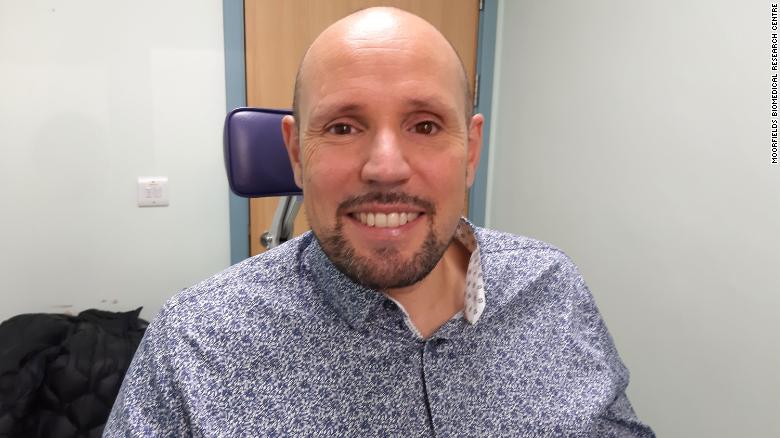
(CNN) – According to the Moorfields Eye Hospital in London, the world’s first patient to have a 3D printed eye fitted was a British man.
Steve Wers, 47, an engineer from Hockney in east London, received a left eye on Thursday and tested it for the first time earlier this month.
Moorfields Eye Hospital said in a statement Thursday that it was the first fully digital artificial eye to be developed for a patient.
The hospital said the eye is more realistic than other alternatives and is designed to have “clear definition and true depth of pupil”.
Other prosthetic eyes have a hand-drawn iris on a disk, which is then inserted into the eye socket.
However, the hospital report further states that its design prevents it from crossing the “full depth” of the eye.
In addition to the more realistic look, the process is considered less aggressive.
A mold must be taken from the eye socket for traditional prosthetic fitting, whereas in 3D prosthetic eye development the socket is scanned digitally and creates a detailed image.
To confirm that both eyes were identical, Versus’ functional eye was also scanned.
Possibility to halve the waiting time
The three-dimensional image was then sent to Germany for printing and then sent back to the UK, where it was finished and polished by an ophthalmologist at Moorfields Eye Hospital.
“I have had a prosthesis since I was 20, and I have always felt unconscious,” Vers said in a statement.
“When I leave home, I often look in the mirror, I do not like what I see. This new eye is so beautiful and based on 3D digital printing technology, it will be even better and better.” Added.
Moorfields Eye Hospital said 3D printing has the potential to “halve” the time it takes from six weeks to two to three to create an artificial eye.
A spokesman told CNN that a clinical trial with more patients would begin soon.
Professor Mandeep Saku, medical head of Moorfields Eye Hospital and professor of ophthalmology and ophthalmology at University College London, said in a statement that he was “excited” by the power of the new development method.
Before the eye was fitted, Zaku said: “We hope that the upcoming clinical trial will provide us with strong evidence of the value of this new technology, which will make a difference to patients.”


:quality(85)/cloudfront-us-east-1.images.arcpublishing.com/infobae/BH6NLAQGXJGADFWTENBUV7Z7RQ.jpg)
:quality(85)/cloudfront-us-east-1.images.arcpublishing.com/infobae/3GK63ATFOMFAYNUAQKUL4WUJFM.jpg)

:quality(85)/cloudfront-us-east-1.images.arcpublishing.com/infobae/SJ35ZLSJ5NB4BWVRJPSK74P7AQ.jpg)